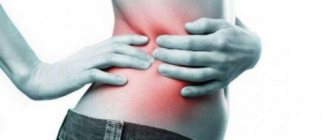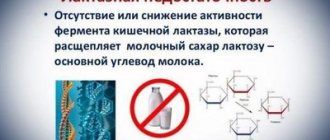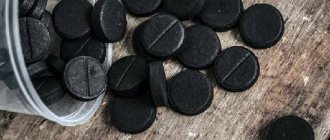An inguinal hernia is a surgical disease that represents the protrusion of abdominal and pelvic organs through the inguinal canal with the formation of a hernial sac from the anterior wall of the abdomen in the groin area. Diagnosed at any age. The main category of patients is children of the first year of life, men over 40 years old.
Data from the World Health Organization indicate statistics in which the incidence of the disease in men is 6 times higher than in women. The reason for the appearance of an inguinal hernia lies in the structural features of the inguinal canal and excessive physical activity of the stronger sex. Among all abdominal hernias, the inguinal hernia is the leader in frequency of occurrence.
Why is a hernia dangerous for men?
The disease occurs when fatty tissue or an organ pushes through a weak spot in the surrounding connective tissue or muscle wall. An inguinal hernia occurs when intestine or abdominal fat bulges through the lower abdominal wall into the groin area. Most often, this type of disease occurs in men. You are at risk if you have a history of this disease in your family, if you smoke, or have had previous abdominal surgery.
Hernias usually do not go away on their own
Hernias tend to get larger. In rare cases, they can lead to life-threatening complications. This is why doctors often recommend surgery. But not every disease of this kind requires immediate treatment. It depends on the size of the bulge and symptoms.
Surgical treatment for an inguinal hernia involves pushing the bulge back inside the part of the body that should contain it and keeping it there.
Physiotherapy
To improve well-being and alleviate the condition, it is useful to carry out physiological procedures. They help best at the initial stage of pathology. The most effective methods:
1. Ultraviolet, laser irradiation. Promotes tissue healing after operations, prevents the penetration of pathogenic microflora into the contents of the hernia, which can lead to the formation of phlegmon.
2. Diadynamic therapy, inductometry. Normalizes intestinal motility and relieves constipation. Such procedures are prescribed for diseases of the digestive system.
3. Applications with paraffin. Often combined with ozekeritotherapy for hernias without complications.
4. Massage. Increases muscle tone, improves blood circulation. If the protrusion is large, then massage should be done with caution.
Important! Physiotherapy procedures must be prescribed by a doctor and carried out under his supervision. You must report any discomfort after the procedure!
In what cases is surgery necessary?
Your doctor will likely recommend it if you have:
- Tissue (such as intestines) gets stuck in the abdominal wall. If the disease is not treated, it can lead to the cessation of blood supply to tissues.
- Infringement. The strangulated organs, usually the intestines, will stop working and if they are not removed quickly, you can become seriously ill. Call your doctor right away if you have a fever or nausea, sudden worsening pain, or the sore area becomes red, purple, or dark.
- The disease causes pain or discomfort , or it increases.
You can wait until surgery if:
- Your lump goes away when you lie down, or you can push the bulge back into your stomach.
- The hernia is small and is not accompanied by dangerous symptoms (surgery may not be required).
It is best to consult your doctor.
What is an “irreducible” and “strangulated” inguinal hernia?
An irreducible inguinal hernia is a hernia that cannot be reduced back into the abdominal cavity in the absence of pain and inflammation. A strangulated hernia is caused by swelling and can lead to disruption of the blood supply to the strangulated organs. A strangulated hernia is a serious condition and requires immediate medical attention. Symptoms of a strangulated hernia:
- severe pain and later redness in the area of the bulge
- sudden pain that increases over a short period of time
- fever
- cardiopalmus
If left untreated, nausea, vomiting, severe intoxication may occur. If timely surgery is not performed for a strangulated hernia, the condition may pose a threat to the viability of the strangulated intestinal loops. If they become necrotic, part of the intestine must be removed. A strangulated hernia is a life-threatening condition for the patient. Therefore, if you suspect a strangulated hernia, you should immediately call “03” or urgently take the patient to a surgical hospital. You should not try to repair a strangulated hernia yourself.
Types of surgery
Your doctor may treat you in one of two ways. Both are done in a hospital or surgery center.
Open surgery
Before the procedure, you will be given general anesthesia. The surgeon will make an incision and carefully push the inguinal hernia back into place, bandage it, or remove it. He will then place stitches on the weak area of the muscle. The surgeon may also add a piece of flexible mesh for additional support and to help prevent recurrence of the disease.
Laparoscopic surgery
During laparoscopic surgery, your abdomen is filled with harmless gas. This will allow the surgeon to get a better look at your organs. He will make several small incisions near the area to be operated on and insert a thin tube with a tiny camera on the end (laparoscope). The surgeon uses images from the laparoscope as a guide to repair the vulnerable area with mesh. For laparoscopic surgery, you will be given general anesthesia.
With laparoscopic surgery, recovery is usually faster: on average, patients return to their normal routine a week earlier than with open surgery.
What your doctor recommends will often depend on the size, type, and location of the sore spot. Your doctor will also take into account your lifestyle, health, and age.
Risks of laparoscopic surgery
This type of inguinal hernia surgery in men is usually very safe. But, as with any surgical intervention, complications are possible:
- Wound infection.
- Blood clots: These can form due to being under anesthesia and not moving for a long period of time.
- Pain: In most cases, the affected area will be painful during healing. But some men and women, for example, develop chronic, long-lasting pain after the intervention. Experts believe the procedure may damage certain nerves. Laparoscopic surgery may cause less pain than an open procedure.
- Relapse. Research shows that using a mesh can cut your risk in half.
Surgical removal
The most reliable way to eliminate an inguinal hernia is considered to be hernioplasty, that is, an operation to cut out the hernial sac and suturing the hernial orifice. In surgery, there are approximately 100 types of operations to remove a hernia. They are:
1. Tension - after removing the hernial sac, the tissues are sewn together. Rarely performed.
2. Tension-free – before stitching, a prosthesis with a mesh structure is installed. It grows into the tissue and prevents the development of a new hernia.
Surgical removal of an inguinal hernia can be performed using the classical method, making an incision in the skin, but this option is used according to indications. More often the operation is performed laparoscopically. The instruments are inserted through small punctures, and manipulations are carried out under the control of video equipment. This method reduces the risk of bleeding and reduces the recovery period.
Where can I find a clinic for treatment?
If you want to undergo surgical treatment of an inguinal hernia in men, then the first step is to receive an online offer from professional medical centers and find out the conditions and price of surgical treatment of an inguinal hernia in your case. The RussianHospitals portal presents the best medical centers and specialists for the treatment of inguinal hernia in men in different cities of Russia. Upload your images and medical files into a special application form and receive an individual offer for the surgical treatment of inguinal hernia in men using surgery with specific prices.
Risk of general anesthesia
Before the operation, the anesthesiologist who administers anesthesia examines the patient, asks him about his medical history and life, clarifies the presence of allergies to medications, and assesses the surgical and anesthetic risk. Complications occur more often in older people and patients with concomitant diseases. Common complications include nausea, vomiting, urinary retention, sore throat and headache. More serious problems include heart attack, stroke, pneumonia, blood clots in the deep veins of the lower extremities, and thromboembolism.
Early activation after surgery, as soon as your doctor allows, will help reduce the risk of complications such as pneumonia and blood clots.
Reasons for appearance
An inguinal hernia is a disease associated with prolapse or protrusion of abdominal organs in the groin area. In this case, a hernial sac is formed, which most often contains intestinal loops or part of the greater omentum. There are two main reasons for the formation of this defect: congenital changes in the structure of the inguinal canal and increased intra-abdominal pressure.
Birth defects appear in childhood, starting from the first year of life. In boys, they develop as a result of non-fusion of the testicular membranes or expansion of the inguinal canal. In adult men, hernias occur as a result of heavy physical exertion. In older people, the disease is associated with a decrease in the tone of muscle tissue and an increase in its extensibility.
General risk factors for the development of pathology, regardless of age and gender:
- Obesity.
- Chronic severe cough.
- Injuries to the groin area.
- Pathology of the gastrointestinal tract associated with increased intra-abdominal pressure (more often, this is an increase in the size of organs and tumors).
- BPH.
- Chronic constipation.
- Passive lifestyle.
- Heavy physical activity (especially for athletes involved in weightlifting, such as lifting weights).
- Playing wind instruments in combination with other risk factors.
- Women have multiple pregnancies.
Prevention
The disease can be prevented by avoiding excessive physical activity and lifting heavy weights. It is important to take care of the stable functioning of the gastrointestinal tract, because constipation provokes hernias. You need to lose excess weight and do physical therapy. You should strengthen your abdominal wall by performing abdominal exercises and “bicycle” exercises. Therapeutic gymnastics should be given at least 20-30 minutes a day.
It should be noted the importance of maintaining a competent diet. You need to eat often, but little by little, and no alcohol. Instead of fatty and spicy foods, flour and confectionery products, you need to eat vegetables, fish and meat, boiled or steamed.
Diagnosis of scrotal hernia
A scrotal hernia, like other hernias, is diagnosed during a physical examination in a doctor's office. In this case, you need to contact a urologist or andrologist. To rule out other possible causes of the tumor, the doctor will do an ultrasound of the scrotum and possibly refer you for an x-ray.
Ultrasound
Symptoms
In men, the symptoms of an acquired inguinal hernia (see photo) are as follows:
- The formation can be straightened with regular pressure, and a characteristic rumbling sound can be heard.
- In a lying position, the protrusion usually either levels out or greatly decreases in size, and vice versa, in an upright position it increases and appears again.
- In the reduced state of the hernia, you can easily feel the enlarged inguinal ring through the skin.
- When the hernial sac descends into the scrotum, the corresponding half of the scrotum increases in size.
- With strong coughing, straining, or sneezing, the hernia increases in size and becomes tense; if you put your hand on it, you can easily feel it.
With a small inguinal hernia, there are no longer any symptoms that bother the patient. But with a significant increase in protrusion, the following ailments may appear:
- Pain in the lower back, lower abdomen - this occurs due to compression of other organs and intestines.
- Aching, prolonged pain in the area of the hernial formation.
- Other signs of indigestion, such as bloating, loud rumbling.
- Constipation, this is also caused by compression of the intestinal loops in the hernial sac.
- In rare cases, if part of the bladder gets into a hernial formation, problems with urination may occur.
The symptoms of an inguinal hernia are quite obvious upon visual examination; the formation has a dense elastic consistency and is easily palpable on its own. It can be round, and if the hernial sac descends into the scrotum, then the protrusion has an elongated shape. As a rule, with a genetic predisposition, the body’s tendency to develop a hernia, a hernial protrusion may occur after lifting weights and intense physical activity.
Diet after hernia repair
A proper diet will speed up recovery. For the first few days, it is better to eat only liquid and pureed food in small portions. On day 4-5 you can go back to your normal diet.
You need to eat as many foods rich in protein and fiber as possible. The diet should include:
- lean boiled meat (chicken, beef);
- seasonal vegetables (raw or steamed);
- dairy products, especially cottage cheese;
- fruits and berries;
- various porridges (buckwheat, millet, oatmeal, pearl barley);
- Fish and seafood;
- nuts and dried fruits.
It is better to exclude alcohol and coffee from your diet, as well as smoking.
Treatment of umbilical hernia using traditional medicine
When an umbilical hernia occurs, methods that have been proven over centuries are often used. Thus, an onion compress is considered one of the most effective remedies. To prepare the medicine, you should bake a large onion, cut it into 2 parts and apply half to the site of the hernia. The bulb is secured with a wide scarf or belt.
This procedure must be repeated daily for 60 days.
In addition, compresses made from red clay, which has nourishing and restorative properties for thin tissue, are of great benefit. 2 tablespoons of clay need to be mixed with 1 tbsp. spoon of water, then make a cake from the mixture and wrap it in cheesecloth. The cake is heated to a temperature of 38 o and applied to the hernia. The compress is removed when the clay dries. The procedure must be repeated for at least 20 days. In the old days, umbilical hernia in young children was often treated with a copper coin. The coin was cleaned of oxides in vinegar, then placed on the baby’s navel and glued with a band-aid. Every day, at least 2 times a day, the baby was placed on his tummy for a period of at least 10 minutes. Such an unusual medicine relieved the child of a hernia within 30-40 days. When treating a hernia with folk remedies, you can also use a decoction of burbot. As scientists explain, the meat of this fish contains many nutrients that help restore connective tissue. Every day you need to cook a strong broth with fish meat and drink at least 500 ml. Cooking time is about 3 hours over low heat. Eating burbot fish soup will normalize the condition of the connective tissue within a few weeks. If the umbilical hernia has not yet reached a large size, dousing it with a mixture of cold water and vinegar will help to cope with it. You should take 1 tbsp. a spoonful of vinegar and dilute it with 1 liter of cold water (preferably from the refrigerator). Then all the water must be poured into the area near the navel within 3 seconds. The procedure must be carried out for 30 days in the mornings and evenings.
Traditional methods of treating inguinal and umbilical hernias have proven themselves to be effective when used by people of all ages. But in order for the treatment effect to be maximum, it is necessary to combine treatment with traditional methods and strictly follow the doctor’s recommendations.
Pathogenesis
The mechanism of development of an inguinal hernia is quite simple. An increase in intra-abdominal pressure leads to stretching and deformation of the most durable and load-resistant component of the inguinal canal - the internal ring, into which the peritoneum subsequently penetrates, ultimately forming a hernial sac. As a rule, this occurs against the background of prolonged and constant exposure to a pathological factor.
If we talk about congenital pathology, the pathogenesis of the disease in boys and girls is different. In the first case, the testicles develop inside the abdomen and only towards the end of pregnancy descend into the scrotum.
When a child is born, this passage usually “slams shut” and completely closes. If this does not happen, in the future, the formation of an inguinal hernia in such children is possible.
The mechanism of development of protrusion in girls is similar. Initially, the uterus forms much higher than its usual area of localization. When the organ descends into its natural position, it leaves behind a passage, which in rare cases does not close naturally.[2,5]
Strangulated testicular hernia
A strangulated testicular hernia is a life-threatening condition. If bowel tangles occur inside the scrotum, the blood vessels become narrowed and the bowel does not receive enough oxygen to function properly. Due to lack of oxygen, the intestines die (intestinal necrosis) and severe infection and sepsis can occur.
Symptoms of a compressed hernia:
- swollen testicle;
- increase in scrotal hernia;
- the hernia changes color to blue or red;
- nausea;
- vomit;
- heat;
- chills;
- rapid heartbeat - tachycardia;
- sudden, increasing pain in the groin or pain in the testicles.
If these symptoms are noticed, you should immediately seek medical help!











